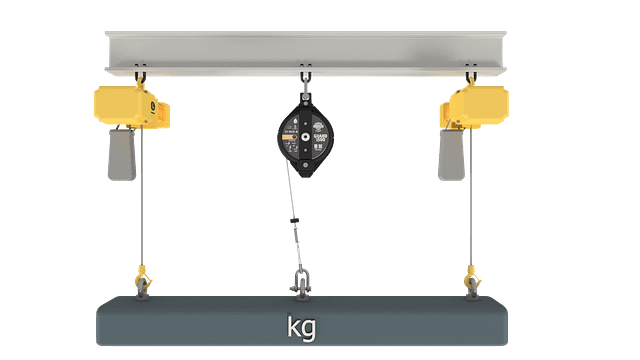
Why Do I Need a Load Arrestor?
Our range of Guard Load Arrest devices help to ensure our customers comply with any applicable local legislation pertaining to lifting equipment. In this article we explore how Guard Load Arrestors are employed by our UK customers to achieve compliance with UK legislation for lifting equipment.

The Lifting Operations and Lifting Equipment Regulations (LOLER) have been enforced in the UK since the 5th December 1998. Regulation 6 (b) (ii) within this legislation states that;
“Every employer shall ensure that lifting equipment is positioned or installed in such a way as to reduce to as low as is reasonably practicable the risk from a load falling freely.”
As with most legislation, this seemingly simple statement is open to interpretation, so in 2014 the Health and Safety Executive (HSE) published an Approved Code of Practice (ACOP) to clarify and set out what companies should do to meet their obligations under LOLER. The ACOP elaborates on Regulation 6 (b) (ii) by stating;
"Various methods can be used to minimise the risk of the load falling out of control. These include:
(a) multiple ropes/chains;
(b) lifting mechanisms with a high factor of safety or strength;
(c) safety gear;
(d) check valves (for hydraulic systems); and
(e) safety nets for palletised loads.”
Installing a Guard Load Arrestor alongside your primary lifting equipment can mitigate the risk of the load falling out of control by providing an independent safety function with complete redundancy to ensure compliance with LOLER.
Regulation 8 of LOLER covers the Organisation of lifting operations and Regulation 8 (1) (c) states that;
“Every employer shall ensure that every lifting operation involving lifting equipment is carried out in a safe manner.”
The ACOP elaborates on this by considering this regulation in relation to working under suspended loads;
“Where practicable, loads should not be carried or suspended over areas occupied by people.
Where this is not practicable you should establish a safe system of work which minimises the risks to people who may need to be below the load.
Where it is necessary to leave loads suspended you should ensure that access to the danger zone is prevented and that the load has been secured properly.”
A Guard Load Arrestor running in conjunction with your primary lifting equipment can help you to establish a safe system of work which minimises the risks to people who may need to be below the load.
Please feel free to contact us if you’d like to discuss any of the points raised in this article or have any questions about our Guard Load Arrestors.

